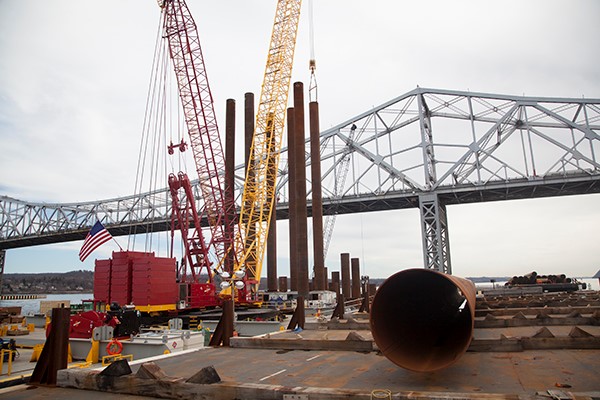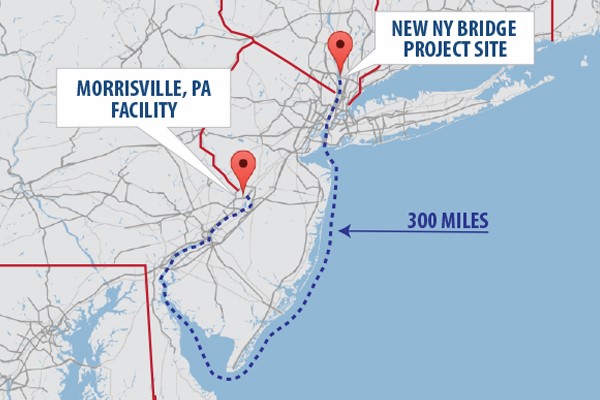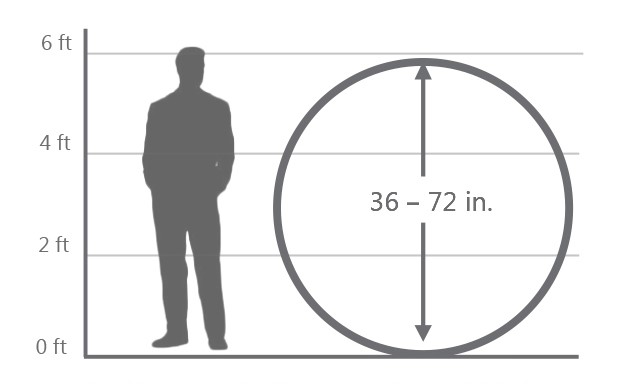
These enormous piles are driven into the project site riverbed to form the foundation of the New NY Bridge.
They have become a familiar sight on the Hudson River: scores of steel pipe piles stacked on barges and awaiting final installation as part of the New NY Bridge project. But casual observers may be unaware of the complexity of the manufacturing and transportation processes for these key elements of the bridge’s foundation.
The steel piles’ journey begins at steel mills located around the U.S., as molten metal is rolled into flat plates of steel and then bent into rings 10 feet long, with varying diameters. The 10-foot pipe rings are then welded together into longer 60- to 80-foot sections and transported by rail to a fabrication plant in Morrisville, located in eastern Pennsylvania on the Delaware River.
At this facility, the segments are precision-assembled into sections up to 150 feet long for delivery to the project site. Controlled conditions and specialized equipment at this plant help ensure high quality standards are maintained throughout the fabrication process. As the pipes are joined together into longer pile sections, the alignment and weld quality are thoroughly inspected to assure that each pile is strong enough to last a century or more.
The facility synchronizes its assembly process with the New NY Bridge’s construction schedule, so that the pile lengths and dimensions that are needed first are the ones manufactured first. As each batch is finished, the pile segments—up to 48 at a time—are loaded onto barges for shipment to the project site. This trip down the Delaware River, into the Atlantic Ocean, and finally up the Hudson River covers some 300 miles.

The piles travel around 300 miles from Pennsylvania to the New York project site.
Shipping these pipe piles by water has many benefits for communities in Rockland and Westchester. Not only is this transportation method more energy-efficient and environmentally friendly, but marine transportation also helps reduce highway congestion. Each delivery of piles would require dozens of tractor-trailer trips, since highway restrictions limit the length of pipes which can be shipped by road.
The pile barges can be transported directly to the site and “parked” on moorings at specified locations in the Hudson River, reducing the need to use waterfront property for storage of construction materials.

Piles vary in size, ranging from 36 to 72 inches in diameter.
Even when the piles arrive on site, additional assembly is required. Because the size of the New NY Bridge requires foundation piles up to 300’ long, each pile is installed in two separate segments, up to 150 feet each, and welded together to create a connection which is even stronger than the surrounding pipe. The full length is driven deep into the riverbed to provide a solid foundation to support the new bridge for generations to come.
